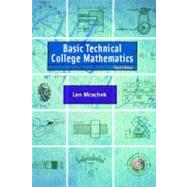
| Arithmetic | |
| Fundamental Operations of Arithmetic | |
| Common Fractions | |
| Decimals | |
| Percentages | |
| Powers and Roots | |
| Measurement | |
| Data, Graphs and Basic Statistics | |
| Applied Algebra | |
| Definitions and Basic Operations of Algebra | |
| Simple Equations and Formulas | |
| Formula Evaluation | |
| Formula Transposition | |
| Ratio and Proportion | |
| Graphs and Linear Equations | |
| Applied Geometry | |
| Basic Definitions and Properties of Geometry | |
| Perimeters and Areas of Plane Geometric Figures | |
| Surface Areas and Volumes of Plane Geometric Figures | |
| Construction of Simple Geometric Figures | |
| Trigonometry | |
| Fundamentals of Trigonometry | |
| Solution of Right Triangles | |
| Solution of Oblique Triangles | |
| Table of Contents provided by Publisher. All Rights Reserved. |
The New copy of this book will include any supplemental materials advertised. Please check the title of the book to determine if it should include any access cards, study guides, lab manuals, CDs, etc.
The Used, Rental and eBook copies of this book are not guaranteed to include any supplemental materials. Typically, only the book itself is included. This is true even if the title states it includes any access cards, study guides, lab manuals, CDs, etc.